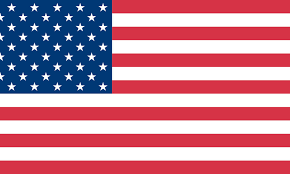What's the Difference Between UPS and USPS?

In the fast-paced world we live in, efficient and reliable shipping services are more crucial than ever. Whether it's for personal use or business logistics, having access to dependable carriers can significantly simplify transit processes and ensure timely deliveries.
In the United States, two of the primary carriers facilitating these needs are UPS and USPS. Both services play a pivotal role in connecting people and commerce, but they offer distinct features and pricing structures that cater to different requirements.
What is UPS?
United Parcel Service (UPS) is a global package delivery and supply chain management company, which was founded in 1907 by James E. Casey and Claude Ryan in Seattle, Washington, with a $100 investment to start a messenger service.
It provides a variety of services ranging from ground shipping to air freight and even international logistics solutions. Some key features of UPS include:
- Extensive tracking options
- Guaranteed express shipping services
- Flexible pickup and delivery times
- Comprehensive international shipping solutions
- A wide arrayof additional services such as insurance and delivery confirmation

What is USPS?
The United States Postal Service (USPS) is an independent agency of the federal government responsible for providing postal service in the United States, which was transformed into its current form by the Postal Reorganization Act in 1970.
It offers mailing and shipping services at accessible rates thanks to its federal mandate. Features of USPS include:
- Universal delivery network covering the entire U.S.
- A range of mail classes and services, including First-Class Mail and Priority Mail
- Flat-rate shipping options
- PO Box services and mail forwarding
- Discounts for online postage purchases and free Saturday delivery

SEE ALSO: Which shipping service is right for you: UPS Ground VS USPS Priority?
What is the difference between UPS and USPS?
UPS and USPS are different in several key aspects as follows:
Service Offered
USPS
USPS provides a wide range of mailing and shipping services for both domestic and international mail and parcels, including:
- First-Class Mail
This service is used for sending standard-sized, single-piece envelopes weighing up to 3.5 ounces, and large envelopes and small packages weighing up to 13 ounces. It is an affordable and commonly used option for personal correspondence, business letters, and bills.
- Priority Mail
It offers fast delivery (normally 1-3 business days), free package pickup service at your home or office, and includes USPS tracking and up to $50 of insurance with most shipments.
- Priority Mail Express
The fastest domestic service is available through USPS, with overnight delivery to most U.S. addresses and PO Boxes, and includes proof of delivery signature record (if requested), tracking information, and up to $100 insurance.
- Retail Ground
A reliable and economical way to ship less-than-urgent deliveries and oversized packages within the United States.
- Media Mail
A cost-effective way of shipping educational materials like books, CDs, and DVDs.
UPS
UPS primarily focuses on parcel shipping, logistics, and freight services domestically and internationally. It offers various shipping options based on speed, from standard ground delivery to overnight air services, including:
- UPS Ground
Reliable ground delivery service for shipments within the United States, typically delivered in 1-5 business days depending on the destination.
- UPS Next Day Air
Expedited delivery service for next business day delivery across the U.S., with options for early morning, end-of-day, or Saturday delivery.
- UPS 2nd Day Air
Guaranteed second business-day delivery within the U.S.
- UPS 3-Day Select
Guaranteed delivery within three business days for less urgent shipments within the U.S.
- UPS Standard
Cost-effective ground delivery for less-urgent shipments to Canada and Mexico.
Delivery Rates
The delivery rates for UPS and USPS vary based on several factors, including package weight, dimensions, delivery speed, and additional services like tracking and insurance. Here's a general overview of how their rates can differ:
- Weight and Size
USPS typically offers more cost-effective solutions for small to medium-sized packages, especially for items under 13 ounces that can be mailed via First-Class Mail. In comparison, UPS may be more competitive for heavier packages or when shipping in bulk, as they provide various options for ground and air services with volume discounts.
- Speed of Delivery
USPS Priority Mail and Priority Mail Express offer expedited services at competitive prices compared to UPS's equivalent Next Day or 2nd Day Air services. Whereas, UPS often has a faster standard ground service, particularly for cross-country shipments, and offers guaranteed express delivery options.
- Additional Service
Additional services like tracking, insurance, and signature confirmation can affect the final price for both carriers. While basic tracking and limited insurance might be included with some USPS services, comprehensive options could incur extra costs. On the other hand, UPS typically includes basic tracking on all packages and offers a higher level of default insurance coverage, with the option to purchase additional protection.
It's important to note that both UPS and USPS adjust their rates periodically, so it's best to use their online calculators or contact them directly for the most accurate and up-to-date pricing. The choice between the two will depend on your specific shipping needs, budget constraints, and desired balance between cost and service features.
Delivery Times
The delivery times for UPS and USPS can vary widely based on the specific service level chosen, the origin and destination of the package, and other factors such as volume and weather conditions. Here is a general comparison:
|
Service Level |
UPS |
USPS |
|
Overnight Delivery |
UPS Next Day Air (by 10:30 a.m., 12:00 noon, or the end of the day) |
Priority Mail Express (Next day to two days with a money-back guarantee) |
|
2-Day Delivery |
UPS 2nd Day Air (Guaranteed second business day delivery) |
Priority Mail can be 1-3 days depending on the destination |
|
3-Day Delivery |
UPS 3-Day Select (Guaranteed delivery within three business days) |
Priority Mail or Priority Mail Express within 1-3 days |
|
Economy Ground |
UPS Ground (1-5 business days) |
USPS Retail Ground (2-5 days) |
|
Small Packages & Envelopes |
UPS Ground or UPS 3-Day Select |
First-Class Mail (1-5 business days for small packages up to 13 oz) | |
|
Media & Educational Materials |
UPS Ground (Delivery typically within 1-5 business days) |
Media Mail (2-8 business days) |
Which is the right option: UPS VS USPS?
Choosing between UPS and USPS depends on several factors, including the nature of the item being shipped, the desired speed of delivery, cost, reliability, tracking capabilities, and other value-added services. Below is a pros and cons comparison for both carriers to help you determine the right option for your specific shipping needs:
1.Which shipping service is cheaper?
USP can be more cost-effective for larger or heavier packages, especially when shipping in volume or requiring additional services like detailed tracking and insurance. Conversely, USPS is generally more cost-effective for smaller packages and standard mail, offering flat-rate shipping options that can be economical for items that fit into the designated boxes or envelopes.
Considering budget constraints, incorporating a shipping label printer for generating 4"x6" address shipping labels can lead to significant savings, particularly with bulk shipments. This cost-effective solution not only slashes expenses but also enhances workflow efficiency, aligning with the fiscal objectives of cost-conscious businesses looking to optimize their shipping processes.
SEE ALSO: How to create and print a USPS shipping label?
YOU MAY ALSO LIKE: What Is a Shipping Label and How to Print It?
2.Which shipping service is faster?
USP is known for reliable and speedy delivery for larger parcels, which offers next-day air and other express shipping options. In comparison, USPS offers fast delivery times for letters and small packages with Priority Mail and Priority Mail Express, providing 1-3 day service for most domestic shipments.
3.How to choose with consideration for tracking and reliability?
UPS provides detailed tracking and guaranteed delivery for expedited services. It is often perceived as more reliable for time-sensitive shipments. Whereas, USPS also provides tracking, particularly for services like Priority Mail and Priority Mail Express, but tracking may not be as comprehensive as UPS for some services.
4.Which is better in view of insurance and value-added services?
UPS provides options like declared value coverage and signature confirmation for an extra fee, whereas USPS comes with a certain level of included insurance for Priority Mail and Priority Mail Express, with the option to purchase additional services at an added cost.
To avoid incurring extra fees for premium services or insurance claims during transit, businesses can employ honeycomb packaging papers and fragile shipping labels from Munbyn to ensure a higher level of protection for their shipped goods. This proactive approach can potentially negate the need for costly premium shipping services that include additional handling care, faster delivery times, or value-added promises.
|
Service Level |
UPS |
USPS |
|
Cost |
Generally more expensive for smaller packages; cost-effective for larger or heavier packages |
Less expensive for small and lightweight items |
|
Speed & Reliability |
Faster delivery times for urgent shipments with guaranteed express |
Less predictable delivery times |
|
Tracking |
Detailed tracking system with real-time updates |
Tracking available |
|
Reach |
Extensive domestic and international network, but pickup service may incur an additional fee |
Wider domestic reach, including PO boxes, military addresses (APO/FPO), and territories; no extra fee for Saturday delivery |
|
Package Size & Weight |
Can accommodate larger and heavier packages |
Size and weight restrictions might be limiting for larger/heavier packages |
|
Insurance & Value-Added Services |
Offers declared value insurance and signature confirmation; additional charges apply for enhanced services |
Includes limited insurance for Priority Mail and Priority Mail Express; additional services available for a fee |
Ultimately, the right option will depend on the specific circumstances of your shipment. It may be beneficial to compare rates and services from both carriers for each shipment to determine the most cost-effective and efficient method.
Wrap up
In summary, UPS and USPS represent two major shipping entities with clear distinctions, ranging from the types of services provided and delivery expenses to transit durations. Choosing the right carrier between UPS and USPS hinges on various factors such as the size and weight of the package, the required speed of delivery, the destination, and budget constraints.
Taking your time to weigh the pros and cons of each carrier for your specific shipping needs is a critical step in ensuring the successful shipment of your goods. Our shipping label printers support both of these shipping services to cater to the needs of different customers. Don't hesitate to choose the most suitable shipping carrier, and take a moment to explore the comparison of Munbyn shipping label printers!


